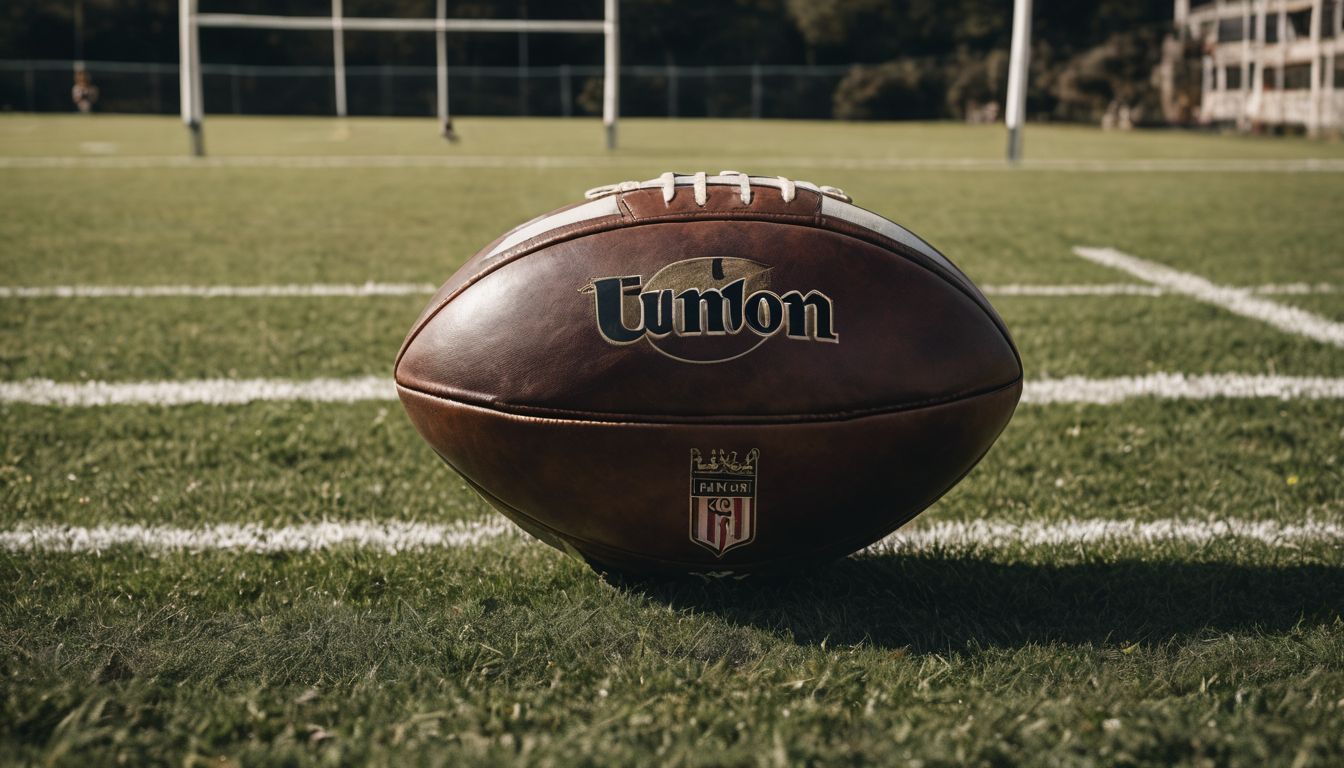Are you eager to dive into the rich tapestry of rugby’s most prestigious competition? The Six Nations Championship, steeped in history, is where legends are forged and rivalries ignite.
In this post, we’ll walk through time to explore the origins, evolution and unforgettable moments of this storied tournament. Ready for a thrilling journey into the heart of European rugby? Keep reading!
Key Takeaways
- The Six Nations Championship started as the Home Nations Championship in 1883 with England, Scotland, Wales and Ireland.
- France joined the competition in 1910, and after World War II, the tournament became internationally recognised.
- Italy entered the championship in 2000 marking the start of what we know as ‘The Six Nations’ era.
- Major achievements within the tournament include the Grand Slam — won by a team that defeats all opponents — and Triple Crown for victories among England, Ireland, Scotland and Wales.
- Player awards such as Player of the Tournament and trophies like Calcutta Cup recognise individual excellence and historic rivalries during each season’s matches.
Origins of the Six Nations Championship
The Six Nations Championship has its origins in the Home Nations Championship, which was first played in 1883. It originally involved the national rugby teams of England, Ireland, Scotland and Wales.
The Home Nations Championship
Back in 1883, rugby history was made with the kick-off of what we now know as The Home Nations Championship. This was where the roots of international rugby competition took deep hold, as England, Ireland, Scotland and Wales locked horns on the field for ultimate bragging rights.
Strong rivalries flourished from those early days, setting up a tradition that has thrived for well over a century.
This initial quartet of national teams fought fiercely to outplay each other in a series that would set the stage for one of Europe’s most beloved sporting events. It wasn’t just about scoring tries; it was about honor, pride and laying down the foundations for what would evolve into today’s Six Nations Championship—a corner-stone contest revered by rugby fans across the continents.
First tournament in 1883
The Six Nations Championship, originally called the Home Nations, debuted in 1883. England, Scotland, Wales, and Ireland competed in the first tournament. As a testament to its historical significance, The Guinness Men’s Six Nations History & Origins highlights this inaugural event as a milestone in rugby union history.
This initial competition set the stage for what would become one of the most prestigious tournaments in international men’s rugby union.
Evolution of the Tournament
The Six Nations Championship has evolved significantly since its inception, especially after World War II when it became the international competition we know today. With the addition of France in 1910, the tournament transitioned into the prestigious European rugby championship it is now.
Post-World War II
After World War II, the Six Nations Championship continued to grow in popularity and significance. The tournament expanded its reach and influence as it embraced the challenges of a post-war world.
With France joining the competition in 1910, the championship transformed into what is now recognised as one of the most prestigious international rugby tournaments in history. The tournament’s resilience and ability to adapt after such a tumultuous period highlights its enduring legacy and timeless appeal to rugby fans across Europe.
Moving on from this significant period, let’s explore the major events that have shaped the evolution of this iconic rugby tournament.
The Six Nations era
The Six Nations era, dating back to 2000, brought a significant expansion to the tournament. With France joining the Home Nations in 1910 and then Italy being added later, the championship expanded into what is now known as the Six Nations Championship.
This change increased the level of competition and further solidified the tournament’s status as one of rugby’s most renowned events. The addition of these teams has not only diversified but also intensified the challenge and excitement for fans across Europe.
Expanding from its original format, each team now plays five games during February and March every year. This modification has resulted in a more dynamic and competitive tournament that showcases an extraordinary display of skill and sportsmanship on an international stage.
Major Events in the Tournament
The Six Nations Championship has seen various major events, including the introduction of Sevens and other Rugby tournaments that have added excitement to the competition. These events have helped to shape the tournament’s rich history and are a key part of its legacy.
Sevens
Sevens, also known as Rugby Sevens, is a variant of rugby union consisting of seven players per side instead of the standard 15. The fast-paced nature of Sevens makes it an exciting and dynamic form of the game, requiring speed, agility, and exceptional teamwork.
Originating in Scotland in the 1880s, this format has gained popularity on a global scale and has been included in prestigious events such as the Commonwealth Games and the Rugby World Cup Sevens.
The shorter match duration and high-scoring nature of Sevens make it accessible to a wider audience and attract new fans to the sport. With its emphasis on open-field running and quick decision-making, Sevens rugby showcases individual skill while retaining the physicality and competitiveness synonymous with traditional rugby union.
Other Rugby tournaments
The Six Nations Championship is not the only rugby tournament that captures the attention of fans. The Rugby World Cup, held every four years, brings together teams from around the globe, showcasing an intense level of competition and national pride.
Another significant tournament is the Rugby Championship, involving Australia, New Zealand, South Africa, and Argentina. This annual event highlights top-tier talent and athleticism from some of the world’s leading rugby-playing nations.
Additionally, fans eagerly anticipate domestic tournaments such as England’s Premiership Rugby and France’s Top 14 as they showcase homegrown talent while attracting international stars to compete at a high level.
Venues and Trophies
The Six Nations Championship takes place across six different venues in England, Ireland, Scotland, Wales, France, and Italy. The tournament’s main trophy is the Championship Trophy, with additional awards for achieving a Grand Slam or Triple Crown.
Additionally, rivalry trophies are also awarded to teams based on specific match-ups within the tournament.
The Championship Trophy
The Championship Trophy is an iconic symbol of excellence in the Six Nations Championship. Since 1883, it has been awarded to the victor of this prestigious rugby competition. Crafted with intricate detail and precision, the trophy represents the triumph of skill, determination, and teamwork.
Its significance lies not only in its physical form but also in the history and traditions it embodies. Throughout the years, teams have competed fiercely for the honour of lifting this revered trophy aloft as a testament to their dedication and prowess on the rugby field.
Winning teams have proudly celebrated their victories with this coveted prize at venues steeped in rugby history, igniting passion among fans worldwide. The Championship Trophy stands as a timeless emblem of achievement within the esteemed legacy of international men’s rugby union competitions.
Grand Slam and Triple Crown
The Grand Slam and Triple Crown are prestigious accolades in the Six Nations Championship. The Grand Slam is achieved when a team wins all their matches in a single tournament, defeating each opposing team.
This feat requires exceptional skill, teamwork, and consistency throughout the competition. On the other hand, the Triple Crown is awarded to the Home Nations – England, Scotland, Ireland, and Wales – if any of these teams defeat each other during the championship.
Both achievements hold significant historical value and indicate dominance in this highly competitive rugby union tournament.
Grand Slams are revered as extraordinary accomplishments due to the arduous nature of winning every match against top-tier opposition. Similarly, achieving a Triple Crown reflects prowess within one’s home nations and acknowledges fierce intra-UK rivalry.
Rivalry trophies
Rugby fans are well aware of the intense rivalries that exist between the six nations participating in the championship. These fierce competitions have given rise to various rivalry trophies, which are awarded to teams based on their performances against specific opponents during the tournament.
For instance, England and Scotland compete for the Calcutta Cup, while Ireland and England vie for the Millennium Trophy. The Wooden Spoon is also a less coveted “trophy” given to the team finishing at the bottom of the table.
Such rivalry trophies add an extra layer of excitement and significance to specific matchups within the championship.
Notable Records and Awards
Notable records in the Six Nations Championship include the Wooden Spoon for the team finishing last and various player awards for outstanding performances. The administration and marketing of the tournament also play a significant role in its success.
Wooden Spoon
The Wooden Spoon is an infamous award given to the team that finishes at the bottom of the Six Nations Championship standings. This unwanted accolade represents a disappointing performance in the tournament.
The team that receives this accolade faces criticism and scrutiny for their underwhelming display, aiming to rebound from their poor showing in subsequent years.
This recognition serves as a stark reminder of the competitive nature of the championship and drives teams to strive for better results in future editions. The Wooden Spoon has become an integral part of the Six Nations history, showcasing how even top-tier rugby-playing nations experience challenging seasons.
Player awards
Moving on from the honour of The Wooden Spoon, the Six Nations Championship also acknowledges exceptional individual player performances. Each year, outstanding players are recognised for their contributions to the tournament.
These prestigious awards include titles such as Player of the Tournament and Top Try Scorer. The recognition is a testament to the skill, dedication, and sportsmanship displayed by these remarkable athletes throughout the competition.
As fans eagerly anticipate each year’s championship, they await not only thrilling matches but also discovering which players will emerge as recipients of these esteemed accolades.
Administration and Marketing
The administration and marketing of the Six Nations Championship involve strategic planning and coordination to ensure smooth tournament operations. The Rugby Football Union (RFU), as well as the federations of France, Ireland, Italy, Scotland, and Wales, collectively manage the tournament logistics.
They oversee aspects such as scheduling matches, coordinating venue logistics, and managing ticket sales to engage fans worldwide. Marketing efforts focus on promoting the championship through social media campaigns, advertising partnerships with sponsors, and special events to build excitement among rugby enthusiasts.
These initiatives aim to elevate the tournament’s profile globally while also nurturing a loyal fan base for long-term success.
Efforts by the tournament organisers showcase a commitment to ensuring that the Six Nations Championship remains a premier event in men’s rugby union. Collaborative branding strategies across nations create an inclusive atmosphere for supporters from all participating countries.
Conclusion
In conclusion, the Six Nations Championship stands as a testament to the rich history and tradition of international rugby. The tournament, with its origins dating back to 1883, has evolved over time to become an iconic event in the world of rugby union.
Fierce competition from the six prominent European rugby-playing countries has fueled unforgettable moments and legendary matches throughout the championship’s history. The legacy of this historic tournament continues to captivate and inspire fans worldwide, cementing its status as one of the most prestigious events in men’s rugby union.
FAQs
1. What is The Six Nations Championship?
The Six Nations Championship is an annual rugby competition between six European rugby playing countries: England, France, Ireland, Italy, Scotland, and Wales.
2. How long has The Six Nations been around?
The championship has a rich history that dates back over a century. It started out in 1883 as the Home Nations Championship with just four teams and evolved into the current format we know today.
3. Who are the current champions of The Six Nations?
The title of champion rotates based on which country wins the most matches during each year’s tournament. Check recent records to find out who currently holds that honor!
4. Can any other countries join The Six Nations Championship?
At present, no new members have been added beyond the original six nations; however, discussions about expansion occasionally take place within the rugby community.









